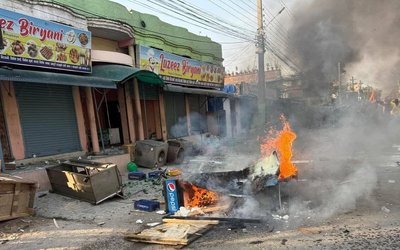
Candidates’ election expenditure for the upcoming elections to the House of Representatives and State Assemblies is to exceed Rs 10.5 billion.
A total of 5,293 candidates are competing under the first-past-the-post (FPTP) system in the twin elections scheduled for November 26 and December 7 in two phases.
Likewise, the number of candidates for both elections included in the proportional representation (PR) stands at 6,094.
The Election Commission (EC) has allowed every FPTP candidate to spend Rs 2.5 million for the election.
Candidacies of 2,044 (382 in first round and 1,662 in the second round) have been endorsed for 165 FPTP seats in the House of Representatives and if we multiply the total number of candidates and the minimum election expenditure they are supposed to spend, the minimum election expenditure (that does not include the expenditure of EC), is calculated at Rs 5.11 billion.
This amount is really a big budget, EC said. More, it does not seem that candidates do spend remaining under the ceiling and their expenditure for the purpose of elections will likely to go higher.
Likewise, 110 members shall be elected to the House of Representatives under the PR system. A political party is permitted to spend Rs 200 thousands per candidate on the basis of number of candidates in the closed list.
Rs 220 million will be spent if only the expenses for the elected posts are to be taken into account according to this. However, all the political parties have submitted the maximum number of candidates towards the proportional representation election to the Election Commission. This expenditure will likely increase several times.
Likewise, there are 3,249 candidates vying for a total 330 posts in the FPTP election to the State Assemblies. The Election Commission has set Rs 1.5 million the election expenditure ceiling for a FPTP candidate of the State Assembly. Accordingly, the total candidates towards the FPTP State Assemblies election will spend a minimum of four billion 873 million 500 thousand.
The political parties have submitted the list of candidates for the 220 posts towards the proportional representation election. Even if 220 candidates are counted, their total election expense comes to be Rs 330 million at the rate of election expense of Rs 150 thousand per candidate. But as per the Election Operation and Management Training resource handbook, the political parties are required to file candidacies to at least 10 per cent of the total number of members elected through the PR system. This means that expenditure under this heading is also going to be high.
Before this, the Election Commission spent more than Rs 6.50 billion for the three phases of the local level elections. The candidates who vied for the various posts in the 766 local levels in the local level elections had also spent a large amount in the election.
As per the closed list of candidates for the PR system of election the parties submitted to the Election Commission, the number of indigenous nationalities males is 783, females is 931 and only one is in the ‘others’ category; the number of Khas Arya males is 867 and females is 997; the number of Tharu males is 158 and females is 262; the number of dalit males is 342 and females is 496; the number of Madhesi males is 455 and females is 563; and the number of Muslim males is 81 and females is 157.
Likewise, the number of candidates in the people with disabilities category, 158 are male, 115 females and one in the ‘others’ group; and 107 male and 122 females in the candidates from the ‘ backward region’ category of the PR closed list.
Out of the 88 political parties registered for the House of Representatives and State Assembly elections purpose, 49 parties had submitted the closed list of candidates towards the PR system for the House of Representatives election while 53 parties submitted it also for the purpose of the State Assembly election purpose, according to the Election Commission.
According to a news item carried out by Rashtriya Samachar Samiti, the House of Representatives and State Assembly elections are being held in two phase on November 26 and December 7.
- NOTICE: PoA Design Consultation Meeting
- Aug 24, 2023
- Upper Tamakoshi Hydropower Limited Notice of Issue of Rights Shares
- Aug 17, 2023
- Upper Tamakoshi Hydropower Ltd.'s Notice To Local Share Holders To Open DMAT Account for Dematerialization
- Aug 11, 2023
- China’s Three Gorges And NEA Sign Agreement To Construct West Seti Hydropower Project
- Nov 16, 2017
- Countries Of Hindu Kush Himalayan Region Agree For Collaboration
- Nov 16, 2017















